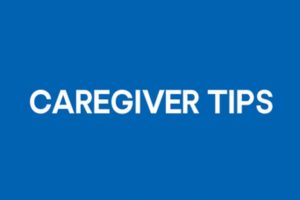Malnutrition Is Affecting Too Many Older Adults

Significant Costs
Malnutrition is a growing health problem with real consequences to its victims and to our nation. It is estimated that disease-related malnutrition costs the U.S. $157 billion annually, with older adult malnutrition alone costing $51.3 billion a year. Malnutrition also creates a 300{6b49c37fd8eab0bc15be20755210b2b23baec09c926f746112670cd0e90b73d7} increase in health care costs.
Further, one in three hospital patients is malnourished upon admission and almost one-third of U.S. patients (31{6b49c37fd8eab0bc15be20755210b2b23baec09c926f746112670cd0e90b73d7}) experiences declines in nutritional status while in the hospital. Malnutrition increases the length of hospital stays on average by four to six days. Also related to malnutrition is sarcopenia (loss of muscle mass), which is linked to a higher risk of falls in older adults.
Shorter-Term Solutions
What could be done?
First, to combat older adult malnutrition, we need to renew and strengthen the federal Older Americans Act. Its nutrition programs — meals and nutrition education — which already serve 2.6 million seniors per year with the capacity to serve more if there was greater funding, are a highly effective preventative measure against malnutrition. They help older adults gain important daily nutrition. These programs should be funded at higher levels.
Meals programs, both in group and in home-delivered settings, also provide important wellness checks, bringing in the National Nutrition Month® theme — older adults can enjoy “social experiences” through these meals programs.
Some older adults, particularly those with chronic disease, may not be able to fully meet their nutrition needs with food alone. For them, oral nutrition supplements become an important malnutrition therapy. In a recent study of older adults, use of a specialized nutrition supplement was associated with a 50{6b49c37fd8eab0bc15be20755210b2b23baec09c926f746112670cd0e90b73d7} lower death rate in patients with heart or lung disease. These supplements can be provided as part of meals programs.
Improve Screening in Hospitals
Further, we must improve and enhance nutrition screening during hospital admissions for all patients 65 and over, using a validated tool — particularly ones who are identified as malnourished or potentially malnourished. We must document malnutrition diagnoses for all patients, especially older adults. Finally, we need to establish and implement a malnutrition treatment plan, including intervention, monitoring and discharge and follow-up, for these same patients.
We also need to integrate malnutrition into quality measures at the clinical and community levels, since those measures are important to clinicians. Malnutrition-related quality measures would ensure that malnutrition screenings and interventions are occurring and awareness of the problem is raised in general.
The new DefeatMalnutrition.Today coalition argued that malnutrition be part of proposed measurements of community chronic disease health care outcomes, stating, “When malnutrition is effectively measured, it can be effectively treated; further, it is important to know where the system is failing patients in this regard.”
Longer-Term Goals and Strategies
The Affordable Care Act should play an important role in the fight to reduce older adult malnutrition. For example, there should be strong components in future care transitions grants on malnutrition screening and intervention.
Another policy change could be to expand the law’s definition of essential health benefits to include malnutrition screening and therapy. Also, it is especially important to include nutrition status information, including malnutrition status, in all electronic health records.
Other policy ideas abound: adding malnutrition to the federal Healthy People 2020 goal for nutrition and weight status and treating it as a key indicator of older adult health; addressing the need for an increased protein Dietary Reference Intake for older adults; expanding Medicare-covered medical nutrition therapy to include diabetes and other conditions and including malnutrition provisions in the final versions of the bipartisan federal 21st Century Cures legislation and the bipartisan Senate chronic care management legislation.
We may wish to have a goal in mind for these improvements. A.S.P.E.N., the American Society for Parenteral and Enteral Nutrition, has called for a national goal to reduce malnutrition in the U.S. in an article published in The Joint Commission Journal on Quality and Patient Safety.
“A national goal, combined with a series of specific actions to address disease-related malnutrition, has the potential to improve patient outcomes by reducing readmissions, morbidity, mortality, and costs,” said co-author Dr. Gordon Jensen, professor and head of Nutritional Sciences at The Pennsylvania State University.
The DefeatMalnutrition.Today coalition is one of the groups supporting the development of a national public health goal for disease-related malnutrition. Further, this bipartisan multidisciplinary group is committed to advancing the idea of nutrition as a key indicator of older adult health in this nation, working proactively on achievable legislative and regulatory solutions to help defeat malnutrition.
Not Just Older Adults
Finally, during National Nutrition Month®, we need to look at the issue of good nutrition intergenerationally. We should commit to a national nutrition strategy focused on healthy eating throughout the lifespan, including foods consumed and nutrition education.
Yet, for the nutritionally vulnerable of all ages, we must commit to ensuring that our federal safety net is especially extended. The Supplemental Nutrition Assistance Program (SNAP) and the Special Supplemental Nutrition Program for Women, Infants and Children (WIC) are programs that make a significant difference in the lives of millions of Americans, young and old. These programs must be protected and it must be ensured that they are serving all who need them.
By Bob Blancato, Next Avenue Contributor











